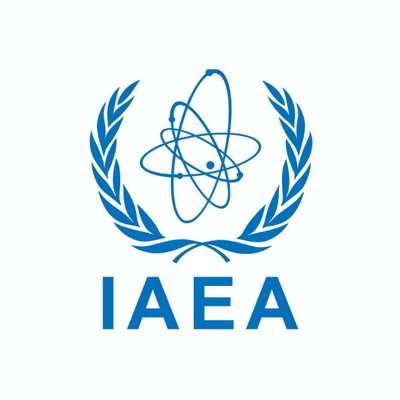New IAEA report outlines need of nuclear power's role in fight against climate change
According to the Intergovernmental Panel on Climate Change (IPCC), the increase in the mean global temperature must be limited to 1.5°C above pre-industrial levels to prevent the worst effects of climate change.

The latest edition of the IAEA’s Climate Change and Nuclear Power series, published this week, draws on past and present data to demonstrate the need for expanding the role of nuclear power in the fight against climate change.
In a webinar held earlier this week to mark the occasion of the publication of Climate Change and Nuclear Power 2020, 210 participants from more than 60 countries heard from government officials and global experts about how nuclear power’s ongoing contribution to abating carbon emissions can be expanded to ensure the world’s transition to clean energy.
According to the Intergovernmental Panel on Climate Change (IPCC), the increase in the mean global temperature must be limited to 1.5°C above pre-industrial levels to prevent the worst effects of climate change. That will require decarbonization of the energy sector by 2050 by rolling out clean, dispatchable and flexible energy systems on a global scale.
“Making that transition will be a huge challenge,” IAEA Director General Rafael Mariano Grossi said in opening remarks to the webinar. “Frankly, I do not believe it will be achievable unless the world makes more use of nuclear power.”
The new publication examines the enabling factors to accomplish this increase in nuclear power capacity, including in the areas of policy, finance, operation and markets. It also analyses more than 400 climate and energy scenario studies for achieving the 1.5°C goal, carried out by 18 organizations including the IAEA and the IPCC.
“All four IPCC illustrative model pathways project a larger increase of nuclear capacity than our own high projection, which already implies the addition of 500 GW of new nuclear capacity over 30 years,” Aliki van Heek, an IAEA energy expert heading the team that drafted the report, said during the webinar.
Laszlo Varro, Chief Economist at the International Energy Agency (IEA), said the transition to clean energy will be much more expensive and difficult to achieve without nuclear power. “In order to put the energy system on a trajectory consistent with obligations under the Paris Agreement, low carbon electricity generation needs to triple over the next 20 years, adding the equivalent of Japan’s power demand each year,” said Varro, a webinar panellist.
Nuclear power is uniquely suited to meeting the challenges posed by climate change owing to its ability to provide low carbon electricity at all hours of the day. Government ministers and global experts will further explore this issue next week at the IAEA Scientific Forum, which this year is focused on Nuclear Power and the Clean Energy Transition.
Nuclear power can also be used as a flexible energy source within integrated energy systems incorporating renewables such as wind and solar energy, increasing its output when the share of these variable renewable sources decreases and vice versa. “Together with renewables, and with the possibility to use hydrogen produced from nuclear electricity to lower emissions from our gas turbines, we are effectively moving towards a low carbon integrated energy system,” said panellist Michael Green, General Manager for Nuclear Policy at Arizona Public Service (APS), which operates the Palo Verde Generating Station in the United States. “Nuclear power is at the core of APS’s clean energy commitment.”
APS is one of three US electric utilities in the US Department of Energy-funded “Hydrogen at Scale” initiative to demonstrate the feasibility of using nuclear energy to cleanly produce hydrogen, which can be used to help decarbonize other economic activities including in energy storage, fuel cells for transport and the energy-intensive production of steel and chemicals.
High-temperature nuclear reactors, which are under development in several countries, can also be used to slash emissions from a variety of industrial processes. Poland is considering such reactors, in addition to its plans to deploy advanced water-cooled reactors totalling up to 9 000 GW(e) to reduce reliance on coal, said Zbigniew Kubacki, Advisor to Poland’s Minister of Climate and one of the webinar panellists.
Among its key findings, the publication confirmed that carbon emissions from the global electricity sector would have been approximately two gigatonnes higher each year over the past decade if nuclear-generated electricity had instead been produced with fossil fuels.
The significant increase in electricity demand expected in the coming decades will require a large baseload source of low carbon electricity, such as nuclear power. There are currently 442 operating power reactors in 31 countries with a net installed capacity of almost 392 000 MW(e) and 53 power reactors with a net installed capacity of more than 56 000 MW(e) under construction in 19 countries, including four newcomers that are adding nuclear power to their energy mix.
The IEA’s Varro said it is vital to ensure the safe, long-term operation of the current nuclear reactor fleet while increasing investments in new capacity and accelerating innovation. According to van Heek, achieving the IAEA’s high case scenario of 500 GW(e) of new capacity by 2050 will require an increase in investment of at least 50% over current levels.
“Governments that choose to use nuclear power need to play a proactive role,” Varro said.
The report also shows that NPPs stand up well to the effects of climate change, with very few forced outages despite numerous extreme weather events. Nuclear power has demonstrated its resilience in the face of adversity since the pandemic began, with no country reporting the enforced shutdown of a power reactor due to COVID-19.
“Nuclear power is very important in the global effort to limit greenhouse gas emissions,” Kubacki said. "We should actively advocate and promote the environmental benefits of nuclear power in our discussions about how to build clean energy systems.”










